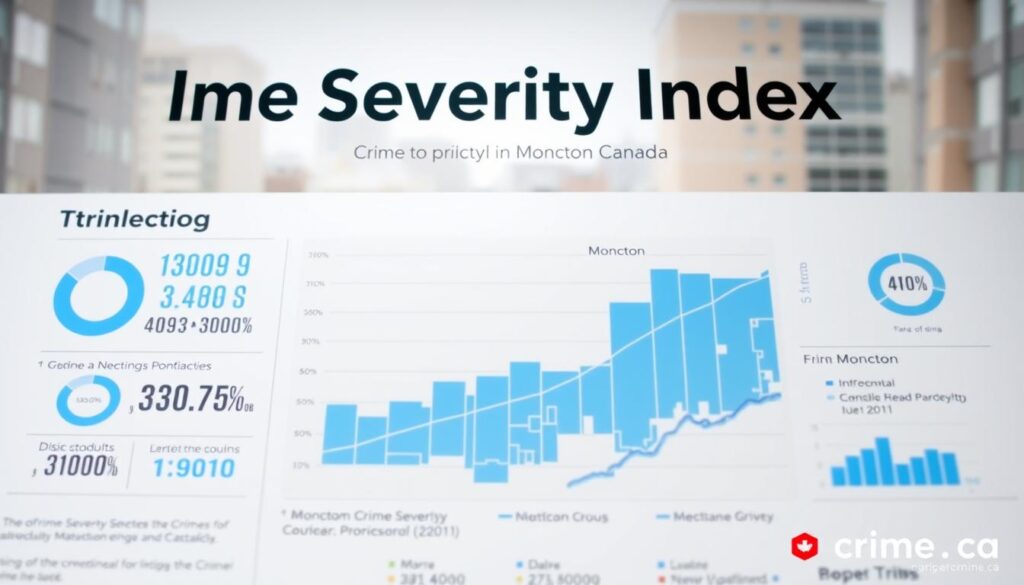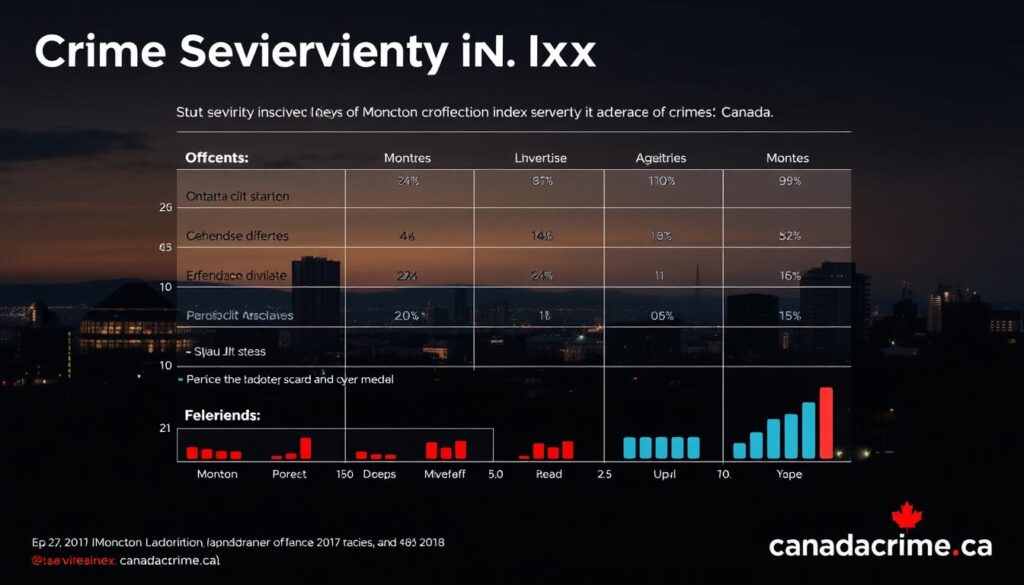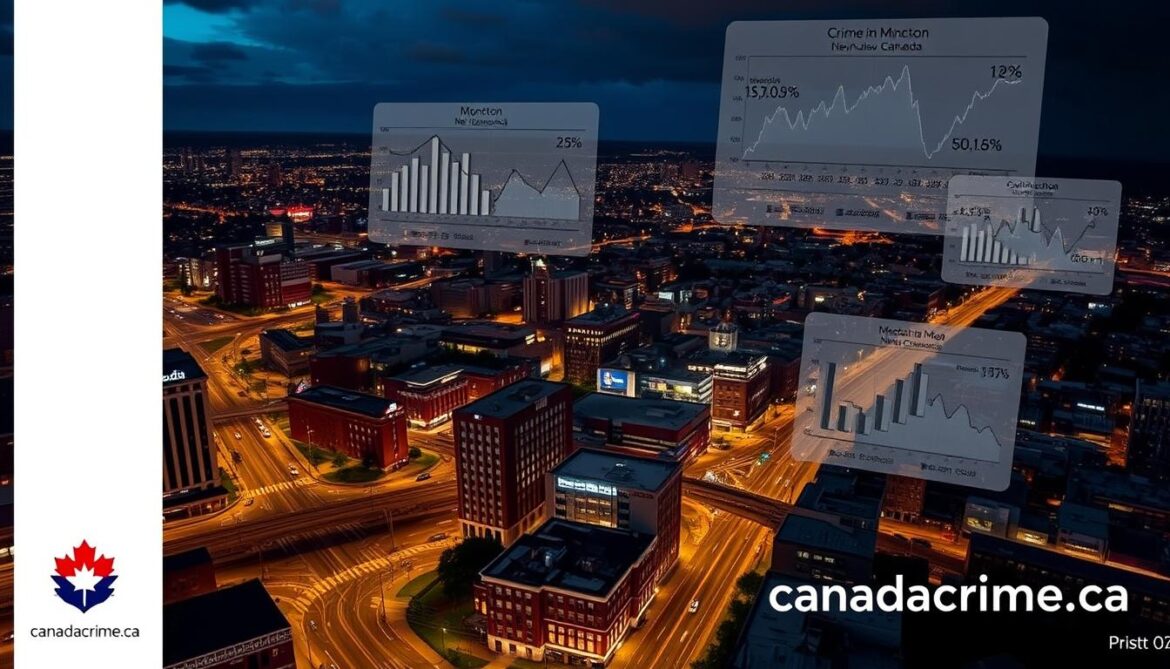In 2021, a shocking statistic emerged from a Statistics Canada report: Moncton had the third-highest police-reported crime rate in Canada. Only Kelowna, B.C., and Lethbridge, Alta., had higher crime rates. This revelation is particularly striking given Moncton’s status as one of Canada’s fastest-growing cities.
The crime rate jumped seven per cent from 8,588 per 100,000 people in 2020 to 9,168 in 2021. However, more recent data indicates a positive trend, with a five per cent drop in the Crime Severity Index and a seven per cent drop in the crime rate from 2022 to 2023.
This shift in crime trends makes Moncton an interesting case study, particularly in understanding the factors contributing to its crime situation and the initiatives being implemented to address these challenges.
Current State of Crime in Moncton
Understanding the current state of crime in Moncton requires an examination of the latest crime statistics and trends. The crime rate in Moncton has been a subject of interest, with various factors influencing its fluctuations.
Moncton’s Position in National Crime Rankings
Moncton ranked fourth in terms of the Crime Severity Index (CSI) in 2021, with a nine per cent increase from the previous year, primarily driven by increases in breaking and entering, and Level 1 sexual assault. This ranking indicates that Moncton has a higher crime severity compared to many other Canadian cities.
According to the latest figures from Statistics Canada, New Brunswick has the eighth-highest crime rate among the 13 provinces and territories, with an eight per cent increase from the previous year, placing it above the national average.
Recent Crime Statistics and Trends
The latest data from Statistics Canada for 2023 shows a drop of five per cent in the Crime Severity Index from 2022 to 2023, and a seven per cent drop in the crime rate over the same period. This represents a positive shift after several years of increases.

The decrease in crime rate is a welcome trend, with officials hopeful that the 2024 numbers will continue to show improvement. The COVID-19 pandemic may have affected crime reporting, as any increases in 2021 could be partially due to decreased reported crimes in 2020 because of pandemic restrictions.
| Year | Crime Severity Index | Crime Rate |
|---|---|---|
| 2021 | 9% increase | Above national average |
| 2022-2023 | 5% decrease | 7% decrease |
As the crime trends continue to evolve, it is essential to monitor the statistics closely to understand the factors contributing to these changes.
Understanding the Moncton Crime Rate in Context
To grasp the true nature of crime in Moncton, it’s essential to analyze the city’s crime statistics within a broader context. This involves comparing Moncton’s crime rate with other Canadian cities and examining the Crime Severity Index (CSI) to understand the seriousness of crimes committed.
Comparison with Other Canadian Cities
Moncton’s crime rate is significant when compared to other major Canadian cities. According to recent data, Moncton ranks third in crime rates among Canadian metropolitan areas as reported by CBC. To understand the implications of this ranking, it’s crucial to compare Moncton’s crime statistics with those of other cities. This comparison can provide insights into whether Moncton’s crime rate is an outlier or part of a larger trend across Canada.
For a more comprehensive understanding, exploring resources such as Canada Crime can offer additional context on how Moncton fits into the national crime landscape.
Crime Severity Index Analysis
The Crime Severity Index (CSI) is a critical metric that measures the seriousness of crimes committed in a region. Moncton ranks fourth in terms of CSI, which saw a concerning nine percent increase from 2020 to 2021. According to Warren Silver, an analyst from Statistics Canada, this increase was primarily due to more reported severe crimes, such as breaking and entering and Level 1 sexual assault.

The CSI increase indicates that crimes in Moncton are becoming more serious. Property crimes, particularly breaking and entering, have significantly impacted Moncton’s CSI, with the city ranking high for property crimes in the Atlantic-New England region from 2019 to 2022. However, a recent trend shows a five percent drop in the CSI from 2022 to 2023, suggesting a potential shift towards less severe crimes or improved crime reporting and prevention strategies.
Types of Crime Prevalent in Moncton
Understanding the types of crime prevalent in Moncton is crucial for addressing the city’s overall crime rate. The city’s crime landscape is diverse, with various offenses contributing to the overall crime statistics.
Violent Crime Statistics
Violent crime is a significant concern for any community, and Moncton is no exception. According to the available data, violent crimes in Moncton have been a subject of focus for law enforcement. The Codiac Regional RCMP has been working diligently to address these crimes and ensure public safety. Violent crime rates are an important metric in understanding the overall crime situation in the city.
| Year | Violent Crime Rate | Change |
|---|---|---|
| 2020 | 560.23 | – |
| 2021 | 540.12 | -3.6% |
| 2022 | 530.45 | -1.8% |
Property Crime Concerns
Property crimes represent a significant portion of Moncton’s overall crime rate. The city ranked in the top spot for property crimes in the Atlantic-New England region from 2019 to 2022.  Insp. Jonathan White of the Codiac Regional RCMP emphasizes that property crimes are often opportunistic and can be prevented through simple measures.
Insp. Jonathan White of the Codiac Regional RCMP emphasizes that property crimes are often opportunistic and can be prevented through simple measures.
Citizens and business owners can reduce their risk by locking vehicles, homes, garages, and outbuildings. Keeping properties well-lit, especially where vehicles are parked, can also deter potential criminals. These measures are crucial in preventing property crimes and enhancing community safety.
- Locking doors and windows
- Keeping properties well-lit
- Not leaving valuables in plain sight
By taking these steps, the community can proactively contribute to reducing the number of property crimes in Moncton.
Factors Contributing to Crime in Moncton
Understanding the root causes of crime in Moncton requires examining the interplay between social, economic, and demographic factors. Several elements are at play, contributing to the city’s crime challenges.
Social Issues: Homelessness, Addiction, and Mental Health
Social issues such as homelessness, addiction, and mental health concerns are significant contributors to Moncton’s crime rate. The lack of adequate social services and community infrastructure to address these issues exacerbates the problem. For instance, individuals struggling with addiction or mental health issues may be more likely to engage in criminal behavior. The city has recognized the need for increased support services, including those focused on mental health.
Economic and Demographic Factors
Economic factors, including income inequality and unemployment rates, also play a crucial role in shaping Moncton’s crime rate. The city’s rapid growth, while generally positive, has led to increased economic pressures and potential disparities in wealth distribution. Additionally, Moncton’s position as a regional hub for business and services may attract transient populations, potentially influencing crime patterns. The significant increase in Moncton’s share of the Codiac RCMP budget from $23.4 million to $32 million between 2021 and 2023, along with the expansion of community officers, demonstrates the city’s commitment to addressing these challenges.

Addressing Crime in Moncton: Current and Future Initiatives
Moncton’s approach to reducing crime involves a multi-faceted strategy that encompasses both law enforcement and community-based initiatives. The 2025 Codiac Regional RCMP budget includes funding for an additional 17 new officers and five municipal employees to enhance community policing and crime reduction efforts.
A recent public safety plan debated by Moncton councillors included 22 recommendations, such as clearing tent cities within 72 hours and increasing the number of RCMP officers. While these recommendations lacked specific timelines and cost estimates, they signify a commitment to addressing crime. Criminologists like Kevin Walby argue that effective crime reduction requires funding for community and social development, alongside non-punitive approaches.
The Department of Justice and Public Safety advocates for a balanced approach that is tough on crime while addressing its root causes. Recognizing that “one size does not fit all,” this comprehensive strategy tailors solutions to the unique challenges of each community. As Moncton continues to implement these initiatives, the crime rate is expected to decrease, enhancing community safety and reflecting the effectiveness of a well-rounded policing strategy.

